Gemstones
What is a gemstone?
Well, in absolute terms, it is just a rock that when cut or polished looks pleasing to our eye. There are literally thousands of minerals which fall into the gem category and even today after decades of buying gemstones I still come across things I have never seen before and barely even heard of.
Of course, many things we call gems are not 'rocks' in the traditional sense. Some are organic in origin. Amber, which is fossilised tree resin, Jet, which is a very hard mineralised coal and of course pearls and coral.
Many of the most attractive and workable gemstones are uncommon, but not so rare that they command the prices of diamonds and emeralds etc. However, when you buy something it's nice to know that you are getting something where the value reflects what you paid.
Real? Unreal? Good? Bad?
As you can imagine, buying even semi-precious gemstones can be a minefield.
A reputable lapidary or gem dealer stands or falls by their reputation in the market, so they have a strong incentive to deal honestly in the provenance and quality of what they sell. These days, it's an international and professional business with a great deal of science and quality control involved.
Fake gemstones etc tend to exist primarily in the pages of novels and the occasional street hustler or bazaar stall in some far flung region. Even then, what you buy is more often than not real, it's just that you are paying a price in excess of its real local value or actual quality.
In all gems, quality = value. It is therefore hardly surprising to learn that since man first created jewellery he has discovered ways of giving nature a little helping hand to improve the appearance of other wise mediocre quality gems. These treatments are so common and they have been going on for so long that they are almost an implicit part of what makes the gem what it is.
Heat Treatment
Many gems form deep in the Earth under specific conditions of pressure and particularly heat. So it was discovered very early in history that the application of heat could change the colour of a gemstone. Gemstones are often treated by heat, either to improve colour or clarity, or sometimes even to change the classification of the stone. For example, if you take the much more frequently found Amethyst or Smoky Quartz and heat it, then you can produce the more valuable Citrine.
Aquamarine is often heat-treated to remove yellow tones and give a purer blue and nearly all Tanzanite is heated to remove brown undertones and give a more sought after blue/purple colour. A significant majority of Sapphire and Ruby is treated with high heat to improve both colour and clarity.
Waxing / Oiling
Some gems frequently contain internal fractures and flaws - Emerald being a good example. Occasionally they are treated with pressure cooking in fine oils which penetrate these micro fissures and make the gem seem clearer than it actually is.
Recently there has been a fashion to fill any large gaps in stones with a material of almost the same refractive index. Glass filled rubies spring to mind. These sorts of modifications are fairly easy to spot and tends to be limited to categories and sizes of gems well outside the affordable category we specialise in.
Radiation
Another way nature influences the colour of stones is the effect of natural background radiation in the rocks. So of course, no sooner had the Curies discovered X-Rays but curious gem dealers were trying radiation on stones. This is still not a very common treatment, however most commercial Blue Topaz acquires its colour by being irradiated to change the colour from white to blue.
Synthetic vs. Artificial Gemstones
A clear distinction must be made between between imitation gemstones and those that have been produced synthetically but are still real. Diamonds, ruby, sapphires and emeralds which possess all but identical chemical and physical properties to the natural gem have been manufactured in laboratories. Synthetic ruby and sapphire, are very common and cost only a fraction of the natural stones. We use synthetic stones occasionally, usually for a piece where a natural ruby of the same size would cost 1000x the price. But where we do this, we always clearly differentiate the synthetic from the wild gem in our descriptions.
It is unusual to find fake gemstones in the sense that someone is trying to pass off a piece of Quartz as a Diamond. More common is a habit of taking an otherwise pedestrian stone and bestowing on it a new name that implies a closer than actual relationship to a far more valuable gems. This is normally achieved by adding a qualifying prefix to another gem name. It has been going on for centuries and for many gems the 'dressed up' identity often becomes the common name. Great marketing, but it can be very misleading for the unwary.
Below are listed a few of the misnomers and their real identity:
| Arkansas diamond (quartz) | Colorado jade (amazonite feldspar) | Tecla pearls (pink conch pearl) |
| Bohemian diamond (quartz) | Fukien jade (soapstone) | Almandine ruby (garnet) |
| Cape May diamond (quartz) | Honan jade (soapstone) | Australian ruby (garnet) |
| Ceylon diamond (Zircon) | Indian jade (aventurine quartz) | Balas ruby (spinel) |
| Herkimer diamond (quartz) | Korea jade (serpentine) | Bohemian ruby (tourmaline) |
| Kenya diamond (rutile) | Manchurian jade (soapstone) | Cape ruby (garnet) |
| Matura diamond (zircon) | Mexican jade (dyed green calcite) | Ruby spinel (Spinel) |
| Mogok diamond (topaz) | New jade ( serpentine) | Siberian Ruby (tourmaline) |
| Radium diamond (Smoky quartz) | Oregon jade (dark green jasper) | Brazilian sapphire (blue tourmaline) |
| Rainbow diamond (rutile) | Soochow jade (serpentine or soapstone) | Lux sapphire (iolite) |
| Rangoon diamond (quartz; original rhinestone) | Swiss jade (dyed green jasper) | Water sapphire (iolite) |
| Esmeralda emerald (green tourmaline) | Virginia jade (amazonite) | Maderia topaz (citrine quartz) |
| Evening emerald (peridot) | Atlas pearls (imitation-satinspar type gypsum beads) | Occidental topaz (citrine quartz) |
| Oriental emerald (green sapphire) | Girasol pearls (imitation) | Palmeira topaz (citrine quartz) |
| Soude emerald (doublet) | Laguna pearls (imitation) | Rio topaz (citrine topaz) |
| African jade (green massive garnet) | Majorica pearls (imitation) | saffranite topaz (citrine topaz) |
| Australian jade (chrysoprase quartz) | Red Sea pearls (coral beads) | Smoky topaz (Smoky quartz) |
| Spanish topaz (citrine topaz) |

 Agate
Agate Iolite
Iolite
 Jade
Jade
 Lapis Lazuli
Lapis Lazuli
 Moonstone
Moonstone Aquamarine
Aquamarine Mother of Pearl
Mother of Pearl Beryl
Beryl Onyx
Onyx Carnelian
Carnelian Opal
Opal Chalcedony
Chalcedony Peridot
Peridot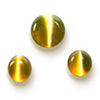 Chrysoberyl
Chrysoberyl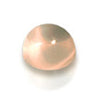 Quartz
Quartz Chrysoprase
Chrysoprase Rock Crystal
Rock Crystal Citrine
Citrine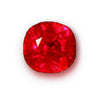 Ruby
Ruby Coral
Coral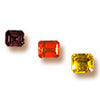 Sapphire
Sapphire Cubic Zirconia
Cubic Zirconia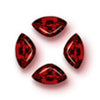 Spinel
Spinel Diamond
Diamond Swarovski Crystal
Swarovski Crystal Emerald
Emerald Turquoise
Turquoise Fluorite
Fluorite Topaz
Topaz Garnet
Garnet Tourmaline
Tourmaline